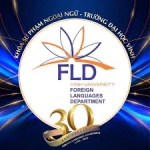Speaker
Description
The advent of machine translation (MT) and generative artificial intelligence (GenAI) has posed significant challenges for English for Academic Purposes (EAP) instruction given its ability to instantly produce text in an academic register across any genre or discipline through a simple natural language prompt. Studies have already shown that GenAI use is difficult to automatically detect (Cingillioglu, 2023), while accompanying citations, references and even content may be factually incorrect (or ‘hallucinated’, Alkaissi & McFarlane, 2023). EAP students may also over rely on generative AI at the expense of authentically acquiring the requisite research and composition skills required to succeed in academia (Zirar, 2023). At the same time, GenAI applications have the potential to fundamentally change the way that EAP is learned and taught, as students turn to this technology to support (or self-regulate) their learning where traditional EAP support falls short.
This paper therefore draws on self-determination theory (Deci & Ryan, 2015) as the theoretical framework for understanding students’ motivations in this space. This presentation reports preliminary findings from a larger study, which adopts a mixed-methods approach to explore students’ use of MT and GenAI for EAP, comparing how students in both English as a second language (ESL) (i.e., Australia) and English as a foreign language (EFL) contexts (i.e., Hong Kong, Vietnam) use MT and GenAI in order to self-regulate their EAP learning through human-machine collaboration. Methods adopted include a survey modified from Xia et al. (2022) together with an interview protocol on self-regulation through technology (Du & Alm, 2024), triangulating these methods to reveal both quantitative and qualitative insights. Initial findings indicate a complex relationship between students’ use of MT/GenAI tools for EAP and students’ self-regulated motivational requirements.

